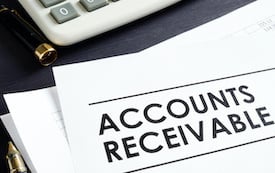4 Signs of Accounts Receivable Fraud Schemes
 Accounts receivable (A/R) are often a popular fraud target because of the high volume of transactions that go through the A/R account. These types of fraud schemes can be costly, but early detection can help minimize losses. This article identifies four signs that something is amiss with accounts receivable:
Accounts receivable (A/R) are often a popular fraud target because of the high volume of transactions that go through the A/R account. These types of fraud schemes can be costly, but early detection can help minimize losses. This article identifies four signs that something is amiss with accounts receivable:
- slow turnover,
- missing controls over financial reporting,
- excessive write-offs and errors,
- customer complaints.
How do these accounts receivable frauds work? Sometimes, a customer’s payment is stolen by an employee. Outstanding receivables also may be exaggerated, say, by a salesperson who wants to boost commissions or by a CEO who’s desperate to meet investors’ expectations. Regardless of the ploy, accounts receivable fraud can be costly, and early detection can help minimize losses. Here are four signs that something is amiss with receivables.
1. Slow Turnover
Accounts receivables turnover measures how quickly invoices are converted to cash. It can be computed by dividing annual sales by receivables. A slowdown happens when a fraud scheme makes it appear that customers are paying later than usual.
For example, in January, Pat, the A/R clerk at XYZ Co., was unable to pay a large personal medical bill, so she “borrowed” a customer payment on Invoice A. Pat planned to repay the “loan” with her year-end bonus. In the meantime, she applied the payment on Invoice B to cover up her initial theft, then applied the payment on Invoice C to Invoice B, and so on.
Pat’s so-called “lapping” scheme didn’t end when she received her bonus, however. Pat received more medical bills and a hefty federal tax bill in April. So, she “borrowed” more from her employer, and the company’s CFO began to wonder why the A/R balance seemed bloated – and why there was an increase in accounts over 60 days overdue.
2. Missing Controls Over Financial Reporting
Internal controls are a company’s first line of defense against employee fraud schemes. In addition to physical controls (like locks, surveillance cameras and lockboxes), companies should require:
- Mandatory vacations
- Segregation of financial duties
- Year-end and surprise audits
- Management review of subordinates’ work
Continuing with the previous example, Pat was a long-term, trusted employee who never missed work. As the company grew, she had taken on increasing responsibility in the accounting department. She was responsible for invoicing, deposits, journal entries and bank reconciliations. Pat even managed billing complaints from customers.
Her scheme unraveled when health problems caused Pat to take medical leave in May. The CFO began to review her work and noticed numerous misapplied payments and discrepancies between the A/R schedule and the general ledger.
3. Excessive Write-Offs and Errors
A fraudster can regain control over a lapping scheme by simply writing off the amounts that have been stolen – or burying them in a one-time adjusting journal entry. That’s why it’s important to review end-of-period adjustments, customer returns, and other credits to A/R and sales.
If bad debts are mounting, the change should jibe with external market conditions. For example, collection issues may arise during a recession, if a major customer is under financial distress or if salespeople are selling to high-risk customers.
4. Customer Complaints
Tips from customers often help detect accounts receivable fraud schemes. If customers consistently complain that payments have been misapplied, posted late – or not posted at all – it may be a red flag that their payments are being applied to the wrong invoice or account.
Sometimes, however, a dishonest employee knows someone who works for a customer, and they work together to misappropriate funds. Collusion makes it especially difficult to detect accounts receivable fraud because the thieves work together to cover up the fraud trail.
To Catch a Thief
Experiencing one or more of these signs doesn’t automatically prove that accounts receivable fraud is happening. But it may warrant further investigation. Contact a forensic accounting specialist for more information.








